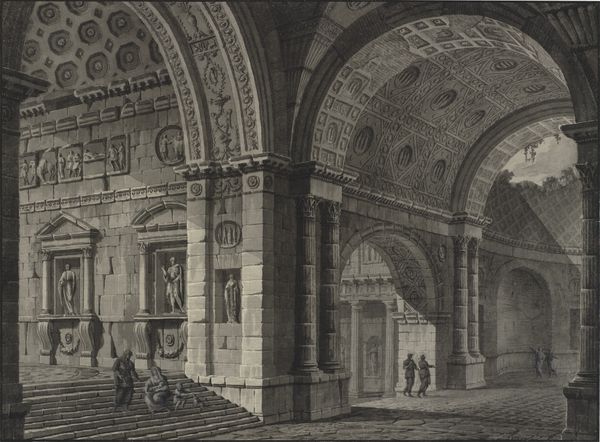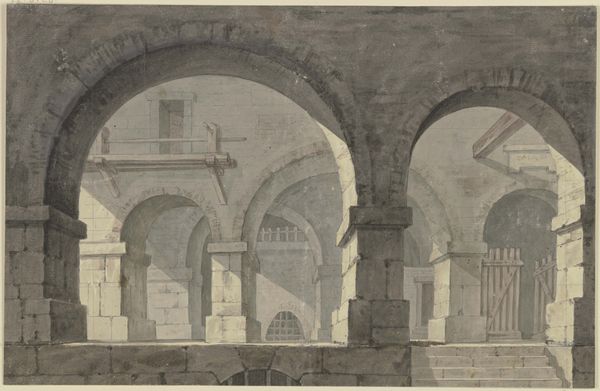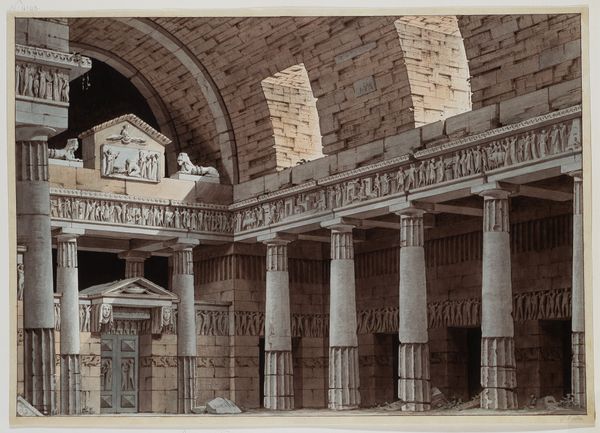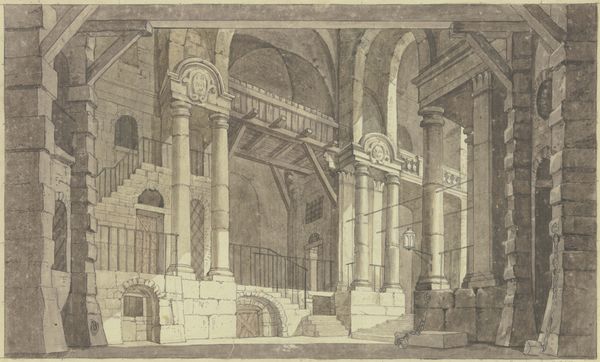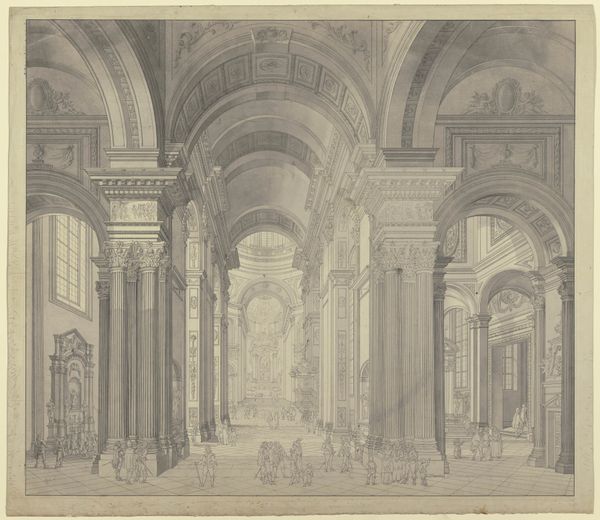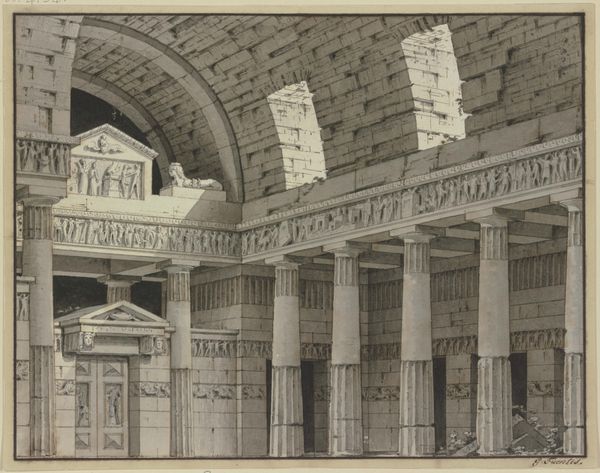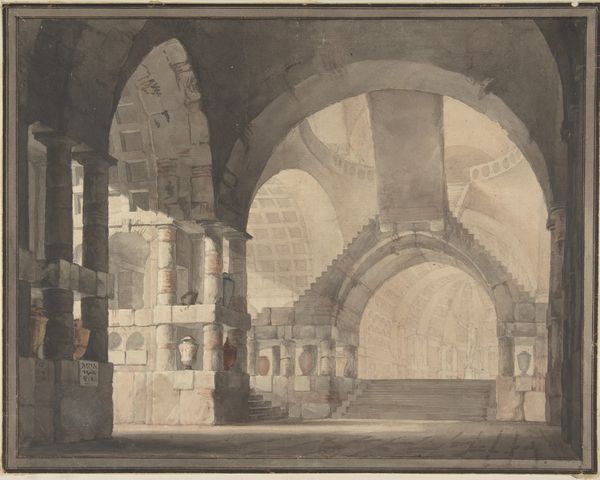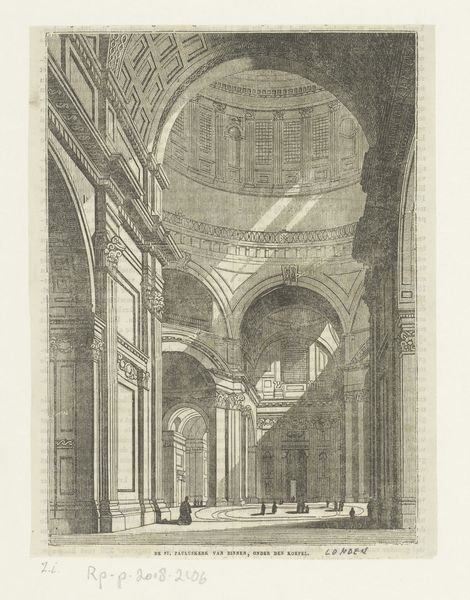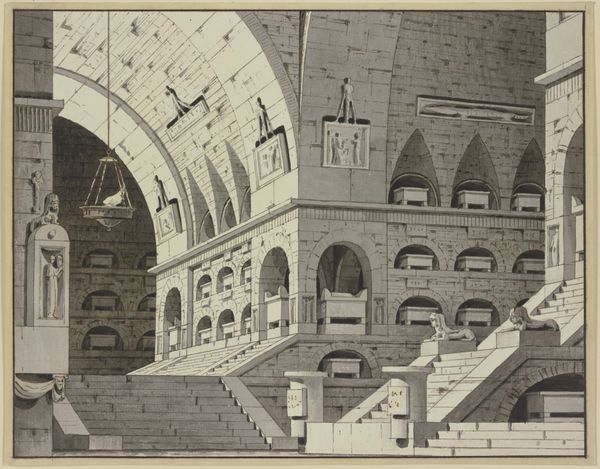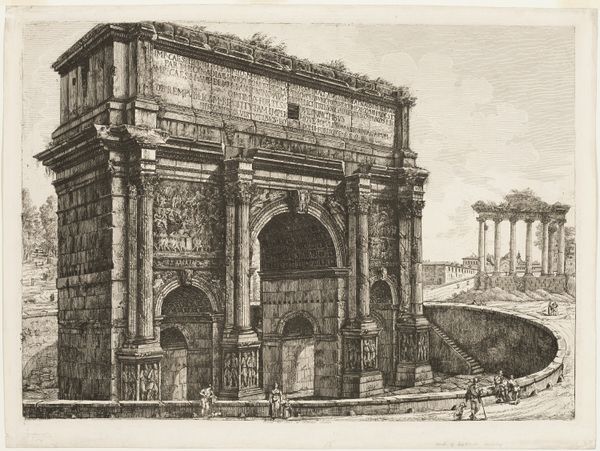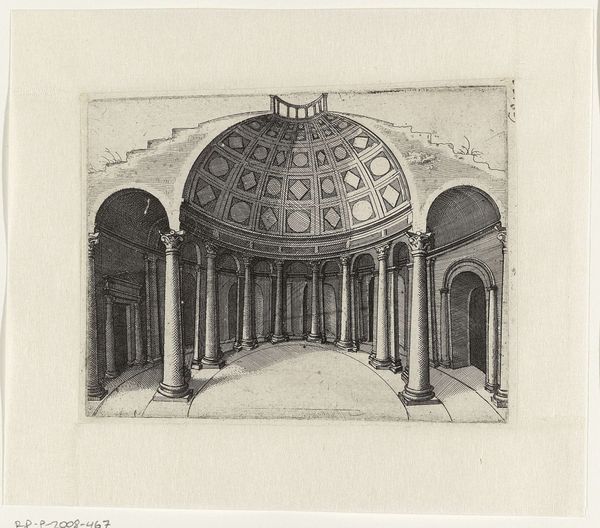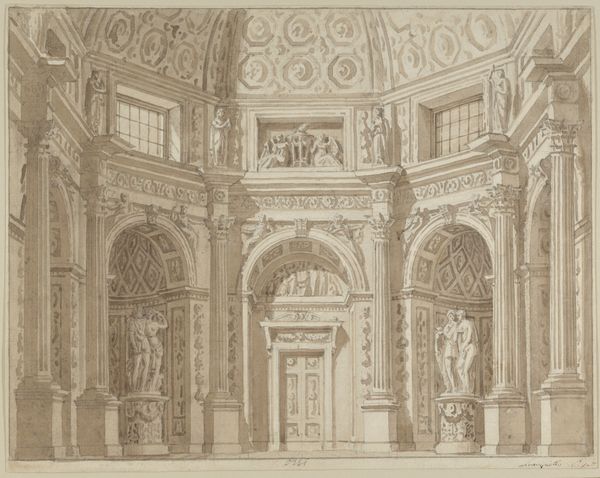
drawing, coloured-pencil, paper, ink, architecture
#
drawing
#
coloured-pencil
#
perspective
#
paper
#
11_renaissance
#
ink
#
coloured pencil
#
academic-art
#
architecture
Dimensions: overall: 16.5 x 21.3 cm (6 1/2 x 8 3/8 in.)
Copyright: National Gallery of Art: CC0 1.0
Curator: Here we have a work attributed to Gasparo Galliari titled "Stage Design," a drawing executed in ink and colored pencil on paper. Its cool tonality immediately lends the architectural interior a somewhat chilling atmosphere, don't you think? Editor: Yes, though I'm also struck by its material simplicity despite depicting what is presumably a grand, luxurious space. The quick, gestural lines speak to its nature as a design sketch, a tangible record of the labor involved in bringing these fantastical scenes to life. Curator: Indeed. Look at the structural rhythm established by the arches and the carefully rendered perspective of the dome. Galliari expertly uses line and shading to define spatial depth, directing our gaze to the vanishing point and creating a sense of boundless, albeit illusory, space. It is a mastery of academic principles. Editor: I see the formal construction, but it's the process that intrigues me. The paper itself becomes a site of potential, where ideas about scenography are worked out in layers. Think about the physical act of drafting: the selection of paper, the preparation of ink, the pressure exerted with the pencil – these are all crucial aspects of its production. How does its being a hand-made artifact change how we should view it? Curator: That is an interesting consideration. But surely we can appreciate how the calculated deployment of visual elements like the symmetrical arrangement and precise detailing contributes to an overwhelming sense of order and stability? Notice how each element is meticulously placed to reinforce the composition’s overall harmony. The ink, paper, pencil – merely the substrates that give visual form to intellectual concepts. Editor: But without these material substrates, how would this 'intellectual concept' be translated into reality for its intended audiences? I see these lines not merely as representative of space, but also as indexical markers pointing to the conditions and means of artistic labor. This perspective highlights that this drawing represents more than geometric precision. Curator: A fascinating, if unconventional, point of view. It reminds us to examine not only the aesthetic qualities but also the physical processes embedded in artistic creation. Editor: And how, perhaps, we undervalue the material grounding of the artistic experience in favor of celebrating its theoretical abstractions.
Comments
No comments
Be the first to comment and join the conversation on the ultimate creative platform.
